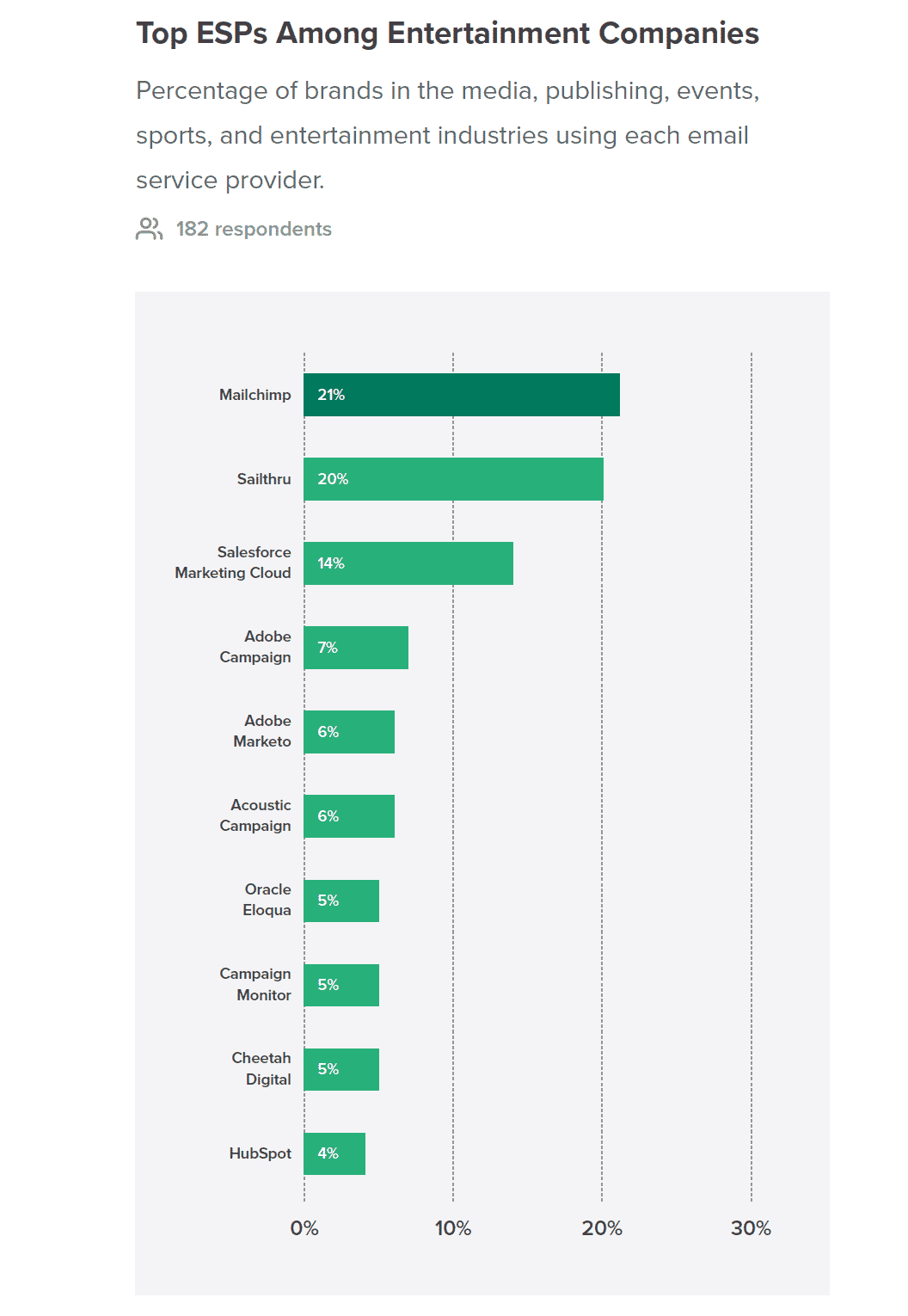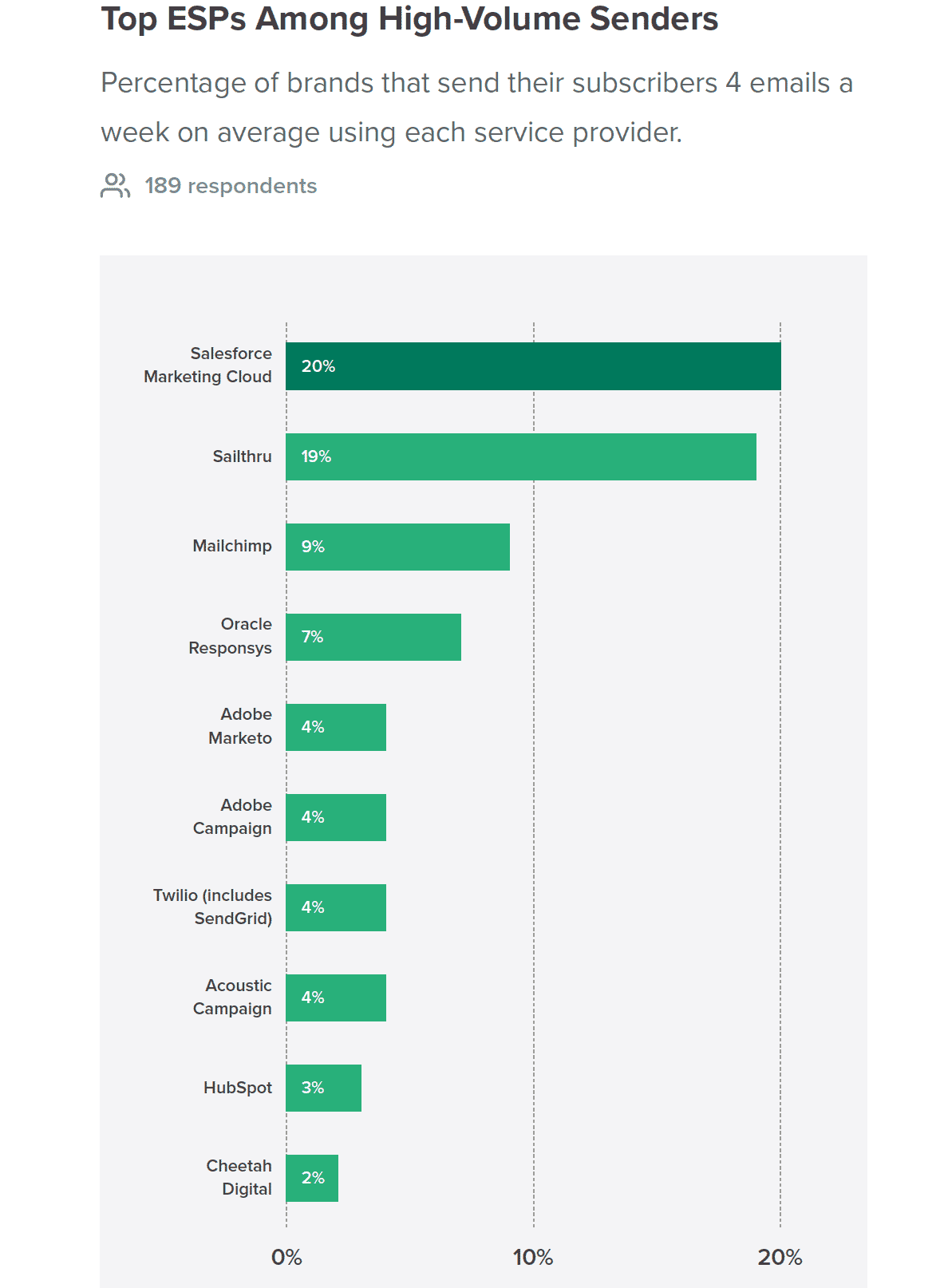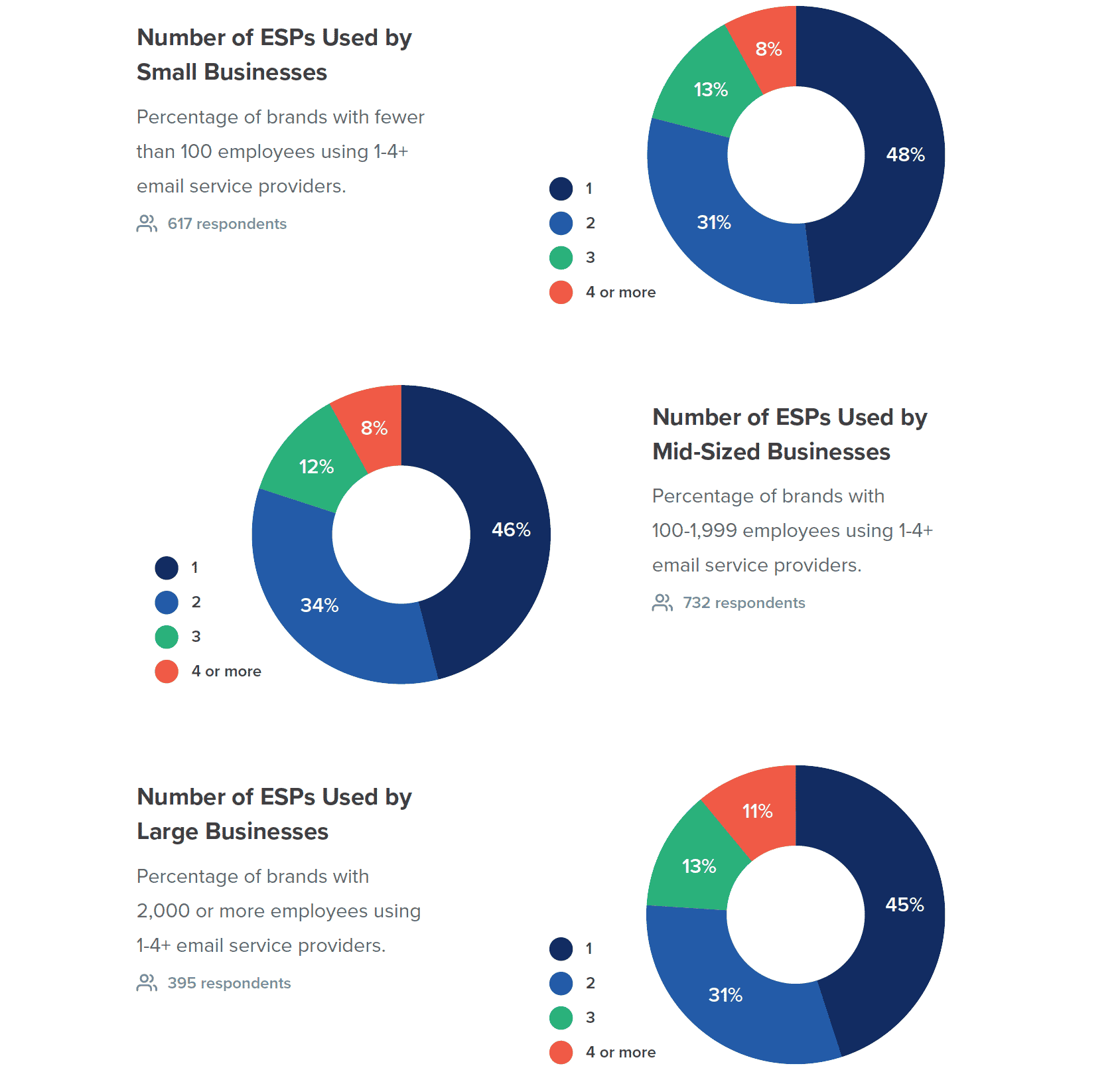Product & Customers
Sailthru Named One of the ‘Top ESPs’ in Several Areas
December 12, 2019

Email is the most lucrative marketing channel, hands down. According to the 2018 Response Rate Report from the Association of National Advertisers and the Data & Marketing Association, email averages a 145% ROI, by far the highest of all the media types evaluated: social media, display ads, paid search and direct mail. It goes without saying that every business needs to work with good email services providers (ESPs). But what is a good ESP?
With input from more than 3,000 marketers, email software company Litmus tackles that question in its second annual State of Email Service Providers Report. Litmus considered companies’ team size and structure, location, industry, send frequency and email program details in order to determine the top ESPs.
We’re thrilled to report that Marigold Engage by Sailthru, along with our sister brand Campaign Monitor, was named a top ESP in several categories.
Where Sailthru Shone
Sailthru ranked highly among ESPs in UK and Europe, for small business, for centralized and decentralized teams alike, among other categories. We performed particularly well among retail marketers, earning 10% of the vote. In our other primary area, media, we scored even higher, beating out our top competitors with 20% of the vote.

“Media companies such as Business Insider, Refinery29 and The Daily Mail work with Marigold Engage by Sailthru for true cross-channel marketing with AI and personalization built in,” says Jason Grunberg, our SVP of Marketing.

Send frequency also factors in to what makes an ESP right for a sender. We had a particularly strong performance in that area as well. Among brands that send at least four emails each week, 19% prefer Sailthru.
What Determines How Many ESPs A Company Uses?
One interesting takeaway from Litmus’ report was how many ESPs the average company uses. On the surface, company size seems like the main indicator of the need for multiple providers. However, the breakdowns were fairly similar; small businesses are only slightly more likely to stick to a single ESP.

The number of ESPs has a stronger correlation with whether or not teams were centralized across different business functions, products and geographies. One-quarter of decentralized teams use three or four providers, compared with just 11% of centralized teams.
The State of Brand Loyalty in the U.S. in 2023
Related



